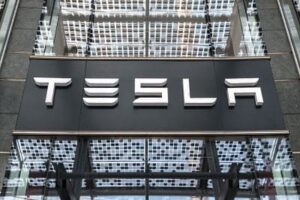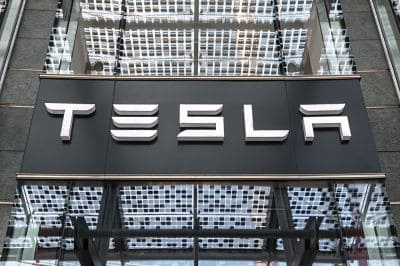 According to the National Transportation Safety Board (NTSB), the victim of a fatal Tesla crash had reported multiple problems with the vehicle’s Autopilot driver-assistance system prior to the incident.
According to the National Transportation Safety Board (NTSB), the victim of a fatal Tesla crash had reported multiple problems with the vehicle’s Autopilot driver-assistance system prior to the incident.
Veered into “Gore Area” Before Fatal Tesla Crash
On March 23, 2018, Walter Huang, a 38-year-old Apple software engineer, was traveling at approximately 70 miles per hour in a Tesla Model X sport utility vehicle in Mountain View, CA, when the vehicle collided with a safety barrier. The Tesla then burst into flames before being struck by two other vehicles. Huang later died from major injuries sustained in the crash.
According to information publicly released by the NTSB on February 11, 2020, Huang had previously reported issues with Autopilot veering the Tesla into the section of the road between a highway ramp and a lane of traffic, commonly known as the “gore area.”
The NTSB’s conclusions mirrored earlier comments made by Huang’s brother, who told a reporter shortly after the fatal Tesla crash that Huang had complained “seven to ten times the car would swivel toward the same exact barrier during Autopilot” and that he “took it into the dealership to address the issue, but they couldn’t duplicate it there.”
While data from the Tesla showed that Huang had taken corrective action in earlier trips after Autopilot had steered into the gore area, the NTSB found no evidence that he braked, took evasive action, or put his hands on the steering wheel in the final six seconds before the fatal Tesla crash. During the last eighteen-minute segment of his trip, the Autopilot system issued two visual alerts and one auditory alert for hands-off driving. It also did not detect Huang’s hands on the steering wheel about one-third of the time.
The NTSB, which plans to hold a hearing on Feb. 25 to determine the probable cause of the incident, reportedly also found evidence that Huang had been using a smartphone prior to the fatal Tesla crash. Logs recovered from an Apple-owned iPhone showed evidence that data was being transmitted and that a world-building game application called Three Kingdoms was active during Huang’s trip.
While the company advises motorists to pay attention and keep their hands on the wheel when the driver-assistance system is deployed, Tesla drivers have noted that they are able to avoid holding the steering wheel for extended periods while using Autopilot. The NTSB had earlier criticized the system in September 2019, when it claimed that Autopilot’s design permitted a “driver to disengage from the driving task.”
The NTSB also released documents from its investigation into another fatal Tesla crash, one that took place last year in Delray Beach, FL. According to the agency, there was no evidence that the driver’s hands were on the steering wheel in the final eight seconds of that trip, when he failed to react before colliding with a semi truck.
Autopilot and Distraction
When Autopilot is activated, Tesla claims that the vehicle “will match speed to traffic conditions, keep within a lane, automatically change lanes without requiring driver input, transition from one freeway to another, exit the freeway when your destination is near, self-park when near a parking spot, and be summoned to and from your garage.” But despite its ability to perform such sophisticated actions, Autopilot still requires significant driver intervention on the road, meaning that the Tesla is not a true self-driving car.
On an automation scale from 0 to 5, a self-driving vehicle would have achieved Level 5, or “Full Automation,” meaning it could operate itself anytime without any human intervention, essentially turning the driver into cargo. Automotive industry analysts, however, claim that even the most high-end Tesla offers only Level 3 – “Conditional Automation.” Such a conditionally but not yet fully automated vehicle could potentially leave Tesla drivers vulnerable to one of the greatest traffic hazards – distraction.
Distraction is a leading cause of car accidents. According to one study by Cambridge Mobile Telematics, an estimated 52 percent of vehicle crashes in the United States have involved distracted driving. Far too often, drivers get so comfortable in their vehicles that they simply do not pay enough attention to the road ahead of them, sometimes with tragic results. Ironically, then, Tesla’s use of Autopilot to combat distracted driving may in some ways encourage it.
Have You Been Hurt by a Distracted Driver?
Even with the most modern technological advances, a driver’s focus can still drift, which can inflict serious harm on others. If you have been hurt by a distracted driver and want to improve your chances of obtaining fair compensation for your injuries, contact the Chicago car accident attorneys at GWC Injury Lawyers LLC.
With more than $2 billion recovered in verdicts and settlements, GWC has earned its position as one of the leading Personal Injury and Workers’ Compensation law firms in Illinois. No other firm is more respected, or more feared, by its adversaries, both inside and outside the courtroom. GWC has the experience, the determination, and the record of success needed to help get you the justice you deserve.
To schedule a free, no-obligation consultation with one of our Chicago car accident lawyers, call our office at (312) 464-1234 or click here to chat with a representative at any time.
<< BACK TO BLOG POSTS